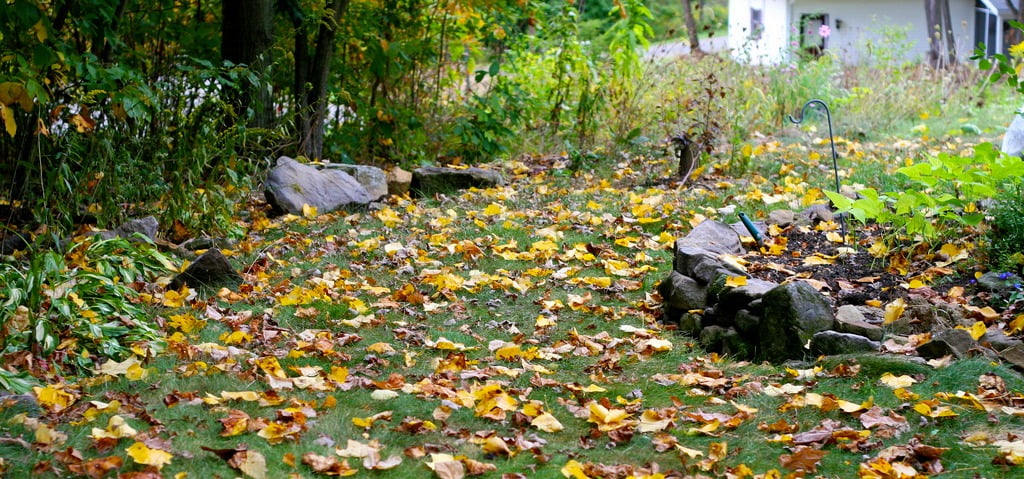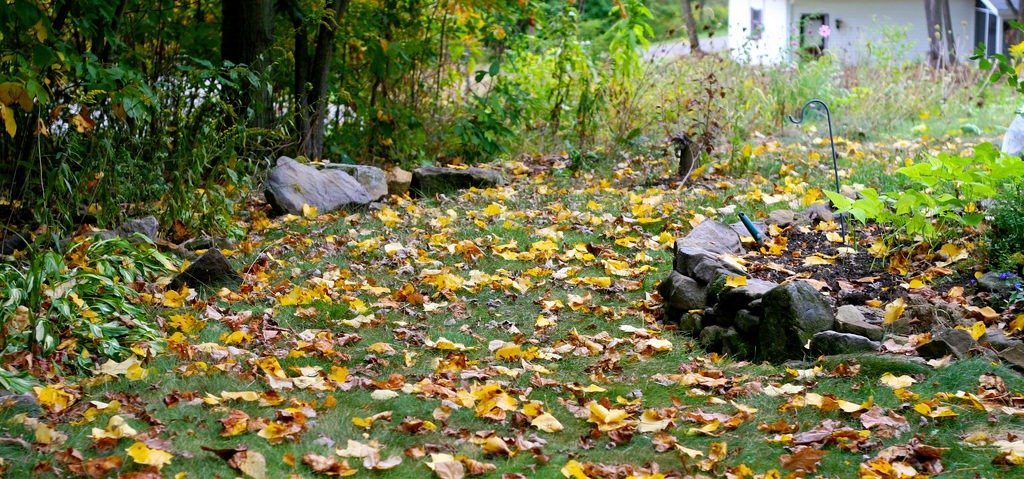
Although it can be tempting to rake up all the leaves from your property, put them in bags and haul them away, leaves can actually do some good around your yard and garden if used in the right ways.
Mulching With Leaves
Leaves have an abundance of trace minerals that they get from trees, which are drawn from deep in the soil. Because of this, if you add a layer of leaves to the top of the garden in the late fall, the leaves can feed earthworms, lighten heavy soils and help sandy soils keep moisture in. Leaves make attractive mulch in the flower garden and are a great source of carbon to balance the nitrogen in your compost pile. They can also help new or tender plants warm, protecting them from the harsh winters we have here in Rhode Island. If you choose to mulch with leaves, we recommend adding them after the ground freezes and raking up any remaining leaves that haven’t decomposed in the early spring to prevent rotting and your roots heating up too quickly.
Using Leaves As Lawn Fertilizer
While we don’t recommend leaving an entire layer of whole leaves on your lawn, as this will smother your precious green grass, you can add a layer and then mow over it. This chops up the leaves into tiny pieces, making it easier for them to decompose quickly. It also keeps the grass exposed to the air and sunlight, as well as enabling the leaves to decompose and add nitrogen to the soil. You may even find that if you take this step in the fall, you won’t need synthetic fertilizers in the spring and summer.
It may still be necessary to rake and get ride of the majority of leaves on your property this fall, but consider saving a pile and using them to add nutrients and protect your plants and lawn this winter.


